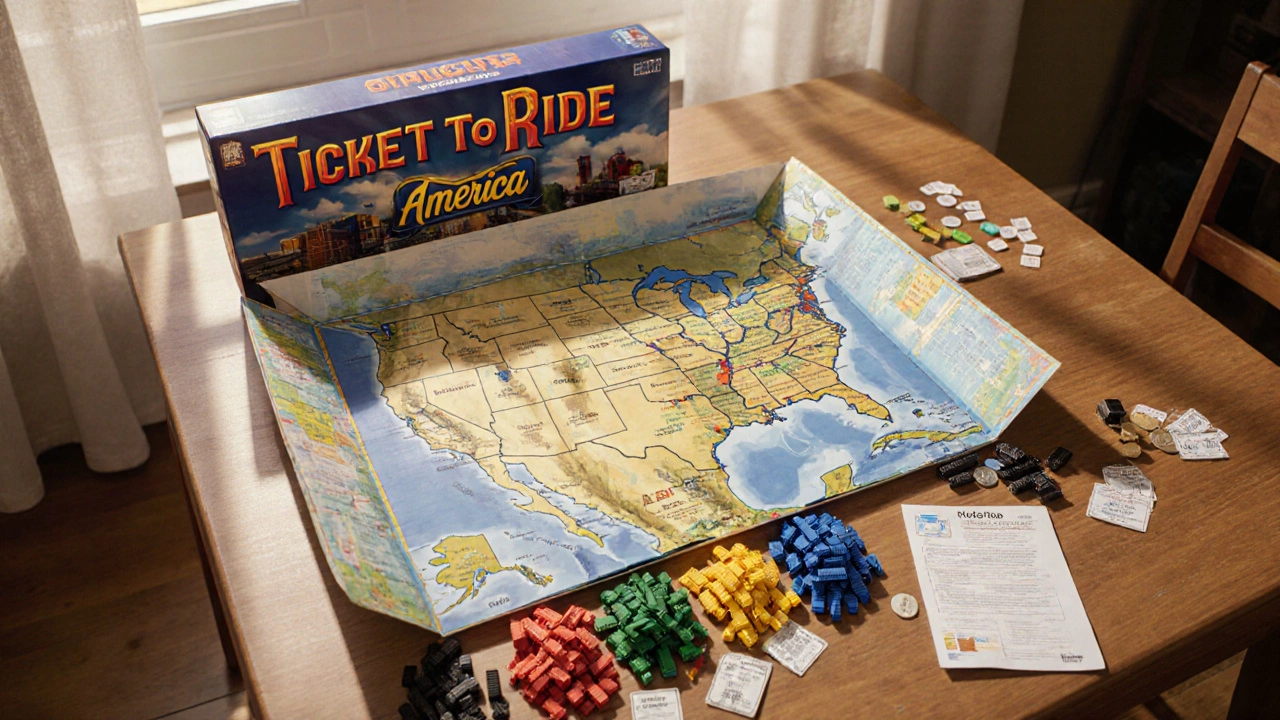
Learn the exact number of train cars in Ticket to Ride America, per player and total for five players, plus storage tips and edition comparisons.
When working with train cars in Ticket to Ride, the colored train pieces you place on the board to claim routes. Also known as train wagons, they represent the core resource you must manage to complete your network. Understanding how these pieces interact with routes, destination tickets, and other game elements is the first step to mastering the board.
The board game itself, Ticket to Ride, a popular railway‑themed strategy game that simulates route building across real‑world maps, was inspired by actual rail systems. For instance, the Indian map version mirrors the massive Indian Railways network, where high‑speed corridors and long‑distance sleepers shape travel patterns. That real‑world backdrop gives each train car a tangible feel, turning abstract gameplay into a mini‑lesson on rail logistics.
In the game, each train car is a unit of capacity. The more cars you allocate to a route, the longer the stretch you claim, and the higher the point payout. This mirrors how actual rail operators allocate rolling stock to busy corridors. For example, sleeper trains, overnight services that provide beds and basic amenities often use longer consists to handle demand on long routes like Delhi‑Kolkata. The same principle applies: a bigger train can haul more passengers, just as a bigger claim yields more points.
When you’re planning your moves, think of route planning as a mini version of Indian rail scheduling. You need to consider high‑traffic corridors, bottlenecks, and the cost of extending your line. The game forces you to balance immediate gains against long‑term network connectivity, much like Indian Railways balances freight and passenger services on the same tracks.
Another real‑world link is the experience of seniors on trains. train travel for seniors, offers discounts, priority boarding, and accessible coaches is a growing focus in many countries, including India. In Ticket to Ride, older players often appreciate the clear visual layout and the low‑stress pace, which resemble the comfort‑focused design of senior‑friendly sleeper services. Knowing that the game is approachable for all ages can help you choose the right family‑friendly version.
Strategically, you’ll notice that certain routes require fewer cars but give high points because they connect distant cities. This reflects how Indian Railways’ long‑haul routes, like the Howrah‑Dibrugarh line, can be less congested but crucial for linking remote regions. Claiming those routes early can lock out opponents, just as a well‑timed train launch can dominate a market segment.
Besides route claims, the game’s destination tickets act like travel itineraries. Each ticket sets a goal, similar to a tourist’s plan to visit multiple heritage sites in one trip. The more tickets you complete, the higher your final score, encouraging you to think ahead and prioritize routes that serve multiple objectives.
If you’re new to the game, start by collecting a mix of short and long routes. Short routes are like commuter trains that fill gaps quickly; they’re cheap in terms of cars and give steady points. Long routes function like express services—costly in cars but rewarding if you can secure them without being blocked.
Advanced players often monitor their opponents’ car counts. When someone runs low, they might bluff a block on a critical corridor, forcing a costly detour. This psychological play mirrors real railway competition, where companies might reserve rolling stock on a line to discourage rivals.
For those who love the Indian rail experience, consider the Ticket to Ride: India edition. It includes unique features such as the “megacities” of Delhi, Mumbai, and Kolkata, each with higher point values and special rules for using extra train cars. This version also highlights the vast network of sleeper trains that crisscross the subcontinent, giving you a deeper appreciation of how train car counts affect real travel comfort.
Finally, remember that the game is as much about fun as it is about strategy. Whether you’re playing with a group of friends, a family gathering, or a senior club, the colorful train cars add a visual cue that makes route building intuitive. Their tactile feel often sparks conversations about actual train trips, budget travel tips, or famous railway journeys like the Darjeeling Himalayan Railway.
Below you’ll find a curated list of articles that dive deeper into related topics: from the best Indian states for heritage tourism to the hidden costs of sleeper trains, and even advice on senior-friendly travel. These pieces will give you real‑world context that can enrich your Ticket to Ride sessions and help you plan actual rail adventures across India.

Learn the exact number of train cars in Ticket to Ride America, per player and total for five players, plus storage tips and edition comparisons.